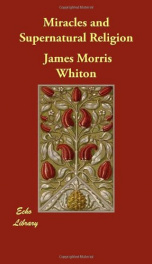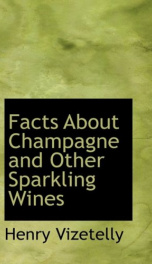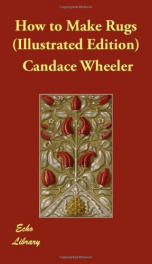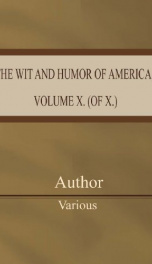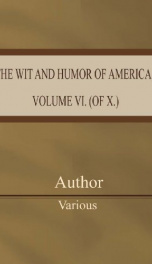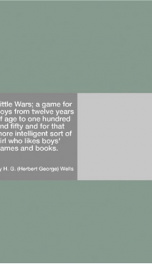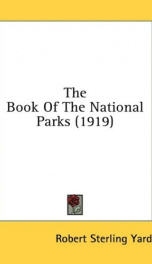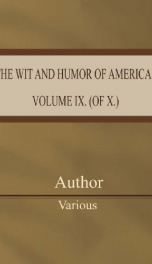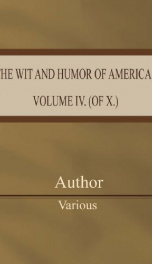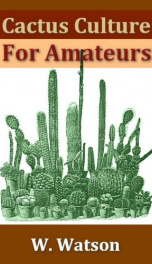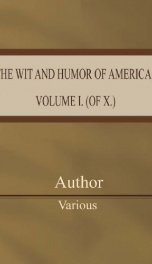Wallace Alfred Russel
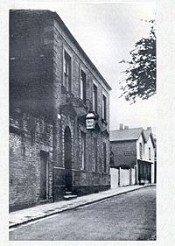
Alfred Russel Wallace, OM, FRS (8 January 1823 – 7 November 1913) was a British naturalist, explorer, geographer, anthropologist and biologist. He is best known for independently proposing a theory of natural selection which prompted Charles Darwin to publish his own theory. Wallace did extensive fieldwork, first in the Amazon River basin and then in the Malay Archipelago, where he identified the Wallace Line that divides Indonesia into two distinct parts, one in which animals closely related to those of Australia are common, and one in which the species are largely of Asian origin. He was considered the 19th century's leading expert on the geographical distribution of animal species and is sometimes called the "father of biogeography".[1] Wallace was one of the leading evolutionary thinkers of the 19th century and made a number of other contributions to the development of evolutionary theory besides being co-discoverer of natural selection. These included the concept of warning colouration in animals, and the Wallace effect, a hypothesis on how natural selection could contribute to speciation by encouraging the development of barriers against hybridization. Wallace was strongly attracted to unconventional ideas. His advocacy of Spiritualism and his belief in a non-material origin for the higher mental faculties of humans strained his relationship with the scientific establishment, especially with other early proponents of evolution. In addition to his scientific work, he was a social activist who was critical of what he considered to be an unjust social and economic system in 19th-century Britain. His interest in biogeography resulted in his being one of the first prominent scientists to raise concerns over the environmental impact of human activity. Wallace was a prolific author who wrote on both scientific and social issues; his account of his adventures and observations during his explorations in Indonesia and Malaysia, The Malay Archipelago, was one of the most popular and influential journals of scientific exploration published during the 19th century. Wallace was born in the Welsh village of Llanbadoc, near Usk, Monmouthshire.[2] He was the eighth of nine children of Thomas Vere Wallace and Mary Anne Greenell. His mother was from a respectable middle-class English family from Hertford. Thomas Wallace was of Scottish ancestry. His family, like many Scottish Wallaces, claimed a connection to William Wallace, a Scottish leader during the Wars of Scottish Independence in the 13th century.[3] Thomas Wallace received a law degree, but never actually practiced law. He inherited some income-generating property, but bad investments and failed business ventures resulted in a steady deterioration of the family's financial position.[3] When Wallace was five years old, his family moved to Hertford, north of London. There he attended Hertford Grammar School until financial difficulties forced his family to withdraw him in 1836.[4] Wallace then moved to London to live and work with his older brother John, a 19-year-old apprentice builder. (In 1979, a plaque was placed at 44 St. Peter's Road in Croydon commemorating the fact that he lived there at one point during this period.) This was a stopgap measure until William, his oldest brother, was ready to take him on as an apprentice surveyor. While there, he attended lectures and read books at the London Mechanics' Institute, where he was exposed to the radical political ideas of the Welsh social reformer Robert Owen and Thomas Paine. He left London in 1837 to live with William and work as his apprentice for six years. At the end of 1839, they moved to Kington, Hereford, near the Welsh border before eventually settling at Neath in Glamorgan in Wales. Between 1840 and 1843, Wallace did surveying work in the countryside of the west of England and Wales.[5][6] By the end of 1843, William's business had declined due to difficult economic conditions. Wallace left in January, aged 20. One result of Wallace's early travels has been a modern controversy about his nationality. Since Wallace was born in Gwent (then called Monmouthshire), Wales, some sources have considered him to be Welsh.[7] However some historians have questioned this because neither of his parents were Welsh, his family only briefly lived in Monmouthshire, the Welsh people Wallace knew in his childhood considered him to be English, and because Wallace himself consistently referred to himself as English rather than Welsh (even when writing about his time in Wales). One Wallace scholar has stated that because of these facts the most reasonable interpretation was that he was an Englishman born in Wales.[8] After a brief period of unemployment, he was hired as a master at the Collegiate School in Leicester to teach drawing, mapmaking, and surveying. Wallace spent a lot of time at the Leicester library where he read An Essay on the Principle of Population by Thomas Malthus and where one evening he met the entomologist Henry Bates. Bates was only 19 years old, but had already published a paper on beetles in the journal Zoologist. He befriended Wallace and started him collecting insects.[9][10] William died in March 1845, and Wallace left his teaching position to assume control of his brother's firm in Neath, but he and his brother John were unable to make the business work. After a couple of months, Wallace found work as a civil engineer for a nearby firm that was working on a survey for a proposed railway in the Vale of Neath. Wallace's work on the survey involved spending a lot of time outdoors in the countryside, allowing him to indulge his new passion for collecting insects. Wallace was able to persuade his brother John to join him in starting another architecture and civil engineering firm, which carried out a number of projects, including the design of a building for the Mechanics' Institute of Neath. William Jevons, the founder of that institute, was impressed by Wallace and persuaded him to give lectures there on science and engineering. In the autumn of 1846, he, aged 23, and John were able to purchase a cottage near Neath, where they lived with their mother and sister Fanny (his father had died in 1843).[11][12] During this period, he read avidly, exchanging letters with Bates about the anonymous evolutionary treatise Vestiges of the Natural History of Creation, Charles Darwin's Journal, and Charles Lyell's Principles of Geology.[13][14] Inspired by the chronicles of earlier traveling naturalists, including Alexander von Humboldt, Charles Darwin and William Henry Edwards, Wallace decided that he too wanted to travel abroad as a naturalist.[15] In 1848, Wallace and Henry Bates left for Brazil aboard the Mischief. Their intention was to collect insects and other animal specimens in the Amazon rainforest and sell them to collectors back in the United Kingdom. They also hoped to gather evidence of the transmutation of species. Wallace and Bates spent most of their first year collecting near Belém do Pará, then explored inland separately, occasionally meeting to discuss their findings. In 1849, they were briefly joined by another young explorer, botanist Richard Spruce, along with Wallace's younger brother Herbert. Herbert left soon thereafter (dying two years later from yellow fever), but Spruce, like Bates, would spend over ten years collecting in South America.[16] Wallace continued charting the Rio Negro for four years, collecting specimens and making notes on the peoples and languages he encountered as well as the geography, flora, and fauna.[17] On 12 July 1852, Wallace embarked for the UK on the brig Helen. After twenty-eight days at sea, balsam in the ship's cargo caught fire and the crew was forced to abandon ship. All of the specimens Wallace had on the ship, the vast majority of what he had collected during his entire trip, were lost. He could only save part of his diary and a few sketches. Wallace and the crew spent ten days in an open boat before being picked up by the brig Jordeson.[18][19] After his return to the UK, Wallace spent eighteen months in London living on the insurance payment for his lost collection and selling a few specimens that had been shipped back to Britain prior to his starting his exploration of the Rio Negro. During this period, despite having lost almost all of the notes from his South American expedition, he wrote six academic papers (which included "On the Monkeys of the Amazon") and two books; Palm Trees of the Amazon and Their Uses and Travels on the Amazon.[20] He also made connections with a number of other British naturalists—most significantly, Darwin.[19][21][22] From 1854 to 1862, age 31 to 39, Wallace travelled through the Malay Archipelago or East Indies (now Malaysia and Indonesia), to collect specimens for sale and to study nature. His observations of the marked zoological differences across a narrow strait in the archipelago led to his proposing the zoogeographical boundary now known as the Wallace line. Wallace collected more than 125,000 specimens in the Malay Archipelago (more than 80,000 beetles alone). More than a thousand of them represented species new to science.[23] One of his better-known species descriptions during this trip is that of the gliding tree frog Rhacophorus nigropalmatus, known as Wallace's flying frog. While he was exploring the archipelago, he refined his thoughts about evolution and had his famous insight on natural selection. In 1858 he sent an article outlining his theory to Darwin; it was published, along with a description of Darwin's own theory, in the same year. Accounts of his studies and adventures there were eventually published in 1869 as The Malay Archipelago. The Malay Archipelago became one of the most popular journals of scientific exploration of the 19th century, kept continuously in print by its original publisher (Macmillan) into the second decade of the 20th century. It was praised by scientists such as Darwin (to whom the book was dedicated), and Charles Lyell, and by non-scientists such as the novelist Joseph Conrad, who called it his "favorite bedside companion" and used it as source of information for several of his novels, especially Lord Jim.[24]
do you like this author?
What readers are saying
What do you think? Write your own comment on this book!
write a commentWhat readers are saying
What do you think? Write your own comment on this author!
write a commentBook list

Island LifeOr the Phenomena and Causes of Insular Faunas and Floras
Series:
Unknown
Year:
Unknown
Raiting:
3.5/5
Show more
add to favoritesadd In favorites

Contributions to the Theory of Natural SelectionA Series of Essays
Series:
Unknown
Year:
Unknown
Raiting:
2.5/5
Show more
add to favoritesadd In favorites

Darwinism (1889)
An exposition of the theory of natural selection,with some of its applications
Series:
Unknown
Year:
Unknown
Raiting:
3.5/5
Show more
add to favoritesadd In favorites
Book list

Island LifeOr the Phenomena and Causes of Insular Faunas and Floras
Series:
Unknown
Year:
Unknown
Raiting:
3.5/5
Show more
add to favoritesadd In favorites

Contributions to the Theory of Natural SelectionA Series of Essays
Series:
Unknown
Year:
Unknown
Raiting:
2.5/5
Show more
add to favoritesadd In favorites

Darwinism (1889)
An exposition of the theory of natural selection,with some of its applications
Series:
Unknown
Year:
Unknown
Raiting:
3.5/5
Show more
add to favoritesadd In favorites

the geographical distribution of animals with a study of the relations of livin
Series:
Unknown
Year:
Unknown
Raiting:
4/5
Show more
add to favoritesadd In favorites

studies scientific social by alfred russel wallace volume 2
Series:
Unknown
Year:
Unknown
Raiting:
4/5
Show more
add to favoritesadd In favorites
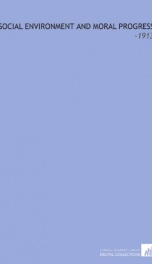
social environment and moral progress
Series:
Unknown
Year:
Unknown
Raiting:
4/5
Originally published in 1913. This volume from the Cornell University Library's print collections was scanned on an APT BookScan and converted to JPG 2000 format by Kirtas Technologies. All titles scanned cover to cover and pages may include marks notations and other marginalia present in the original volume.
Show more
add to favoritesadd In favorites
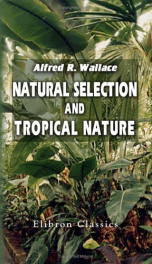
natural selection and tropical nature
Series:
Unknown
Year:
Unknown
Raiting:
3.5/5
This Elibron Classics edition is a facsimile reprint of a 1891 edition by Macmillan and Co., London.
Show more
add to favoritesadd In favorites

my life a record of events and opinions volume 2
Series:
Unknown
Year:
Unknown
Raiting:
3.5/5
Show more
add to favoritesadd In favorites
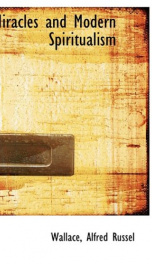
miracles and modern spiritualism
Series:
Unknown
Year:
Unknown
Raiting:
4/5
In this book author presents his theory stating that spiritual beings communicate with us and materially affect the world around us. Many scientists eagerly disagreed with Wallace, but he remained steady in his beliefs. "I assert without fear of contradiction that whenever the scientific men of any age have denied the facts of investigators on a priori grounds, they have always been wrong," he answered when being criticized. Wallace gathered together the best evidence of the 19th century and the proofs of respectable scientists of that time who also studied mediumship and spirit phenomena. The author also included a chapter as an answer to the arguments of Hume, Lecky and others against miracles.
Show more
add to favoritesadd In favorites

land nationalisation its necessity and its aims being a comparison of the syst
Series:
Unknown
Year:
Unknown
Raiting:
3.5/5
Show more
add to favoritesadd In favorites

island life or the phenomena and causes of insular faunas and floras includin
Series:
Unknown
Year:
Unknown
Raiting:
2.5/5
Show more
add to favoritesadd In favorites

is mars habitable microform a critical examination of professor percival lo
Series:
Unknown
Year:
Unknown
Raiting:
3.5/5
Show more
add to favoritesadd In favorites
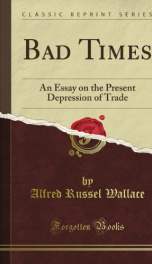
bad times an essay on the present depression of trade
Series:
Unknown
Year:
Unknown
Raiting:
3.5/5
PREFACE.THE present work was written last ~rarch, incompetition for the Pears prize of one hundredguineas for the best essay on' the present depressionof trade. It did not obtain the prize, and it istherefore now submitted to the judgment of thepublic-and more especially of the working classes,with some additional matter in the earlier chapterswhich could not be compressed within the limitsassigned to the competing essays.As our existing land-system in its relation todepression of trade is somew hat fully treated inthe following pages, this seems the proper place tostate that twelve years of the writer's early life werespent in active employment as a land-surveyor andvaluer, during which time he lived chiefly among fanners and country people in various parts ofEngland and Wales. The interest in agricultureand rural life then acquired has been supplementedby observation and study during recent years; andin now cOIning forward as a writer on the laTable of Contents CONTENTS; PART 1; CONDITIONS AND CAUSES OF TRADE DEPRESSION; CHAPTER r; STATEMENT OF THE PROBLEM; Commencement and long continuance of the depression-The; problem of increasing wealth accompanied by depression; and poverty-Our social economy a failure-Trade depression; and pauperism probably due to common causes; Pages 1-3; CHAPTER II; POPULAR EXPLANATIONS OF THE DEPRESSION; Eight distinct explanations or suggestions recently put forthBad; harvests not a primary cause-Reasons why the protective; tariffs of foreign countries are not a chief causePreliminary; objection to the currency as a cause of depression-'; The depreciation,of silver, and appreciation of gold,; not adequate causes - General argument against the; cunency thcory-Ov
Show more
add to favoritesadd In favorites

a dissertation on the true age of the world in which is determined the chronol
Series:
Unknown
Year:
Unknown
Raiting:
2.5/5
Show more
add to favoritesadd In favorites

a brief popular account of all the financial panics and commercial revulsions in
Series:
Unknown
Year:
Unknown
Raiting:
2.5/5
Show more
add to favoritesadd In favorites

The Malay Archipelago, the land of the orang-utan and the bird of paradise; a narrative of travel, with studies of man and nature — Volume 2
Series:
Unknown
Year:
Unknown
Raiting:
3/5
Show more
add to favoritesadd In favorites
What readers are saying
What do you think? Write your own comment on this author!
write a commentGenre
if you like Wallace Alfred Russel try:
readers also enjoyed
What readers are saying
What do you think? Write your own comment on this author!
write a commentGenre
if you like Wallace Alfred Russel try:
readers also enjoyed
Do you want to read a book that interests you? It’s EASY!
Create an account and send a request for reading to other users on the Webpage of the book!
